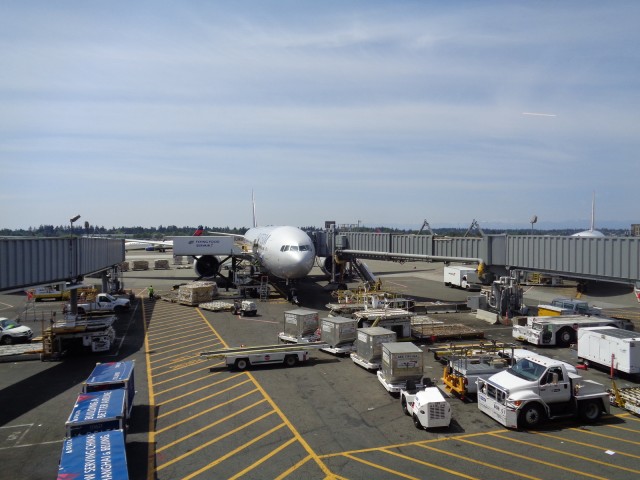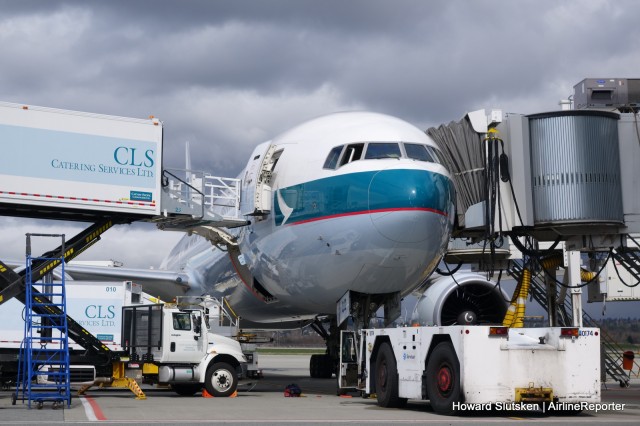
This ramp area may look messy, but it is like controlled chaos… kind of – Photo: AirlineReporter
Out in the aviation world, there are a few different people who always take the blame for anything airline-related. If you are inside the terminal, the customer service staff always take the brunt of any little problem. If it’s onboard the aircraft, the blame is given to the flight attendants. But if something happens to your checked baggage, then all the blame is placed squarely on the ramp agent (more commonly known as a ’œramper’).
I was a ramp agent, and I can tell you right now that sometimes that blame should not come to me. Sure, there are times that they should take the blame, but not always. Working the ramp is not an easy job, and I am going to debunk a couple of myths that surround life under the wing.

A Cathay Pacific Boeing 777-300 in the midst of a turnaround at YVR. You can see the yellow air conditioning hoses under the bridge.
Your flight has landed, and the plane is pulling up to the gate. You’re ready to spring into action as soon as you hear the “we’re stopped” chime. But instead of jumping up and waiting in the aisle, why don’t you relax in your window seat, and look outside? You do have a window seat, don’t you? There’s quite the dance of people and equipment happening, all to service the plane and get it ready for its next flight.
The turnaround actually begins long before the plane lands. Equipment is pre-positioned at the gate, supplies and catering are prepared, and ramp and terminal staff get ready for the arrival. As the flight turns onto the taxiway after landing, the crew gets their gate assignment from ground control, or in the case of a major airport, ramp control. The plane’s Auxiliary Power Unit (APU) will have been started to provide an electrical and pneumatic supply after the engines are shut down. The APU is a small jet engine, generally located in the tail cone. One of the first airliners with an APU was the tri-jet Boeing 727, and its APU was located in the wing root.

